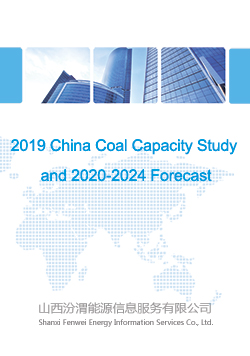
Cycle of publication: Annual
Date of completion: Jan, 2020
Online Self-purchase
With the advancement of the supply-side reform, coal de-capacity target for 2016-2019 has completed. The exit of backward capacity and the release of advanced capacity play a key role in promoting the development of China’s coal industry. In the future, China will continue to eliminate coal mines in small scale, with outdated safety conditions, facing resource depletion, overlapping with nature reserves, scenic spots and drinking water source protection areas, with severe disasters and in long-term suspension or shutdown, while de-capacity scale will reduce. With the promotion of capacity replacement and advanced capacity construction, the effective coal supply capacity will be gradually growing in China.
Fenwei Energy is timely releasing the study report at year end, to review coal capacity in China and forecast capacity changes. The report incorporates abundant data, figures and technical parameters.
1. 2016-2019 Coal Industry Supply-side Reform Review
1.1 Policy evolution – capacity replacement speeds up, high-quality capacity releases rapidly.
1.2 De-capacity achievements
1.2.1 Capacity withdrawal in China
1.2.2 Capacity withdrawal by province/by coal type (thermal coal, coking coal)
2. 2019 Coal Supply-side Reform Policy and Execution Outcome
2.1 Policy requirements
— Policy contents - de-capacity, capacity replacement, construction of advanced capacity
2.2 De-capacity achievements
2.2.1 Capacity withdrawal in China
2.2.2 Capacity withdrawal by province/by type (thermal coal, coking coal)
2.3 Construction of advanced capacity and newly-added capacity
2.4 Changes in coal industry in 2019 brought by supply-side reform
2.4.1 Mine size
2.4.2 Capacity structure and coal output
2.4.3 Corporate profit margins
2.4.4 Coal import & export
2.4.5 Safety and environmental protection
3. China Coal Capacity Status Quo by 2019-end
3.1 Coal capacity
3.1.1 Total China
3.1.2 Byprovince
3.2.1 Operating, built-up, under-construction and suspending construction capacity by province
3.2.2 Total thermal coal capacity
3.2.3 Effective thermal coal capacity
3.3 Coking coal capacity
3.3.1 Operating, built-up, under-construction and suspending construction capacity by province
3.3.2 Total coking coal capacity
3.3.3 Effective coking coal capacity
4. 2020-2024 Coal Capacity Forecast
4.1 Development trend of coal supply-side reform policy
4.2 Forecast on advanced capacity construction and commissioning of newly-added capacity
4.3 Thermal coal capacity forecast
4.3.1 Capacity withdrawal by province
4.3.2 Operating, built-up, under-construction and suspending construction capacityby province
4.3.3 Total thermal coal capacity
4.3.4 Effective thermal coal capacity by province
4.4 Coking coal capacity forecast
4.4.1 Capacity withdrawal by province
4.4.2 Operating, built-up, under-construction and suspending construction capacity by province
4.4.3 Total coking coal capacity
4.4.4 Effective coking coal capacityby province
4.5 2020-2024 total coal capacity forecast
4.5.1 Operating, built-up, under-construction and suspending construction capacity by province
4.5.2 Total effective coal capacity forecast
4.6 2020-2024 China coal capacity development trend analysis
5. Conclusion
Hot-sale Products